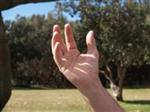
Get a Fundamental Understanding of Human Biology
- For your own health and well being
- A foundation for further studies
- To work in health, fitness or related industries
ACS Student Comment: The materials were clear and informative and lead you to explore other information. The online quizzes were a good way to check understanding. The assessments meant you needed to research in more depth. I have started an Occupational Therapy course at Uni so it has given me a good foundation. An excellent learning opportunity to work in my own time, but with support. Lisa Greenhead, UK - Human Biology 1a (Anatomy and Physiology) course.
Deepen your knowledge in Human Anatomy and Physiology. This course provides you with the knowledge basis for a career in health science or simply give you a better insight into your own body. You will understand what is a human body, how it works, and which factors determine health by systematically examining individual systems such as the nervous system, the skeletal system, digestive system and more.
Why do this course?
- To understand your own body
- To underpin working in the health or fitness industry
- As a foundation for further studies
COURSE STRUCTURE
There are 6 lessons as follows:
1. Cells and Tissues
- Introduction
- Cell Components
- Human Tissues
- Epithelial tissues
- Connective tissues
- Fluid tissues
- Muscle tissues
- Nervous tissues
- Cell Division
- Cell Processes
- Osmosis and Diffusion
- Hydrostatic Pressure
- Active Transport; Phagocytosis, Pinocytosis
- Electro Chemical Gradient
- Nutrient and Waste Exchange in Cells
 2. The Skeleton
2. The Skeleton
- Introduction
- Bone tissue
- Cartilage
- Bone marrow
- The periosteum
- Osteology
- Bone Anatomy
- Bone Types; long, short, flat, sesamoid irregular, sutral
- Review of all Bones in a Human Skeleton
- Bone Joints; Synarthrosis, amphiarthrosis, Diarthroses
- Types of Bone Movements; gliding, angular, rotation, other
- Skeletal Functions
- Fractures
- Fracture Healing
- Osteoporosis
3. The Muscular System
- Parts of the Muscular System
- Tendons
- How Muscles Move
- Muscle Fibre (Filament) Types; thick, thin, elastic
- Smooth (or involuntary) muscle
- Striated (or voluntary) muscle
- Cardiac muscle
- Types of Skeletal Muscle; slow and fast oxidative fibres, Fast glycolytic fibres
4. The Nervous System
- Nerve Cells
- Sensory Neurons
- Motor Neurons
- Terminology
- The Nervous System
- Central Nervous System
- Peripheral Nervous System
- The Brain; Cerebellum, Olfactory bulb, Cerebrum, Thalamus, Hypothalamus, Medula Oblongata
- Spinal Chord
- Spinal Chord Injuries
- Cranial Nerves
- Spinal Nerves
- Automatic Nervous System
- Reflex Actions
5. Digestion and Excretion
- Digestive System Introduction
- The Alimentary Canal
- The Mouth
- Oesophagus
- Stomach
- Small Intestine
- Large Intestine
- Accessory Digestive Organs; tongue, teeth, salivary glands, liver, hepatic artery, gall bladder, pancreas.
- Nutrient and Digestion Disorders
- Vomiting
- Peptic Ulcer
- Jaundice
- Lactose Intolerance
- Haemorrhoids
- Cirrhosis
- Excretion; The Kidneys, Ureters, Blasser
- Urinary System
6. Physiological Systems
- Endocrine System
- Effects of Hormones; seven types
- Summary of Endocrine Glands
- Respiratory System
- Trachea
- Bronchial Tree
- Left and Right Bronchus
- Lungs
- Physiology of Respiration
- Gaseous Exchange
- Rate and Depth of Breathing
- Reproductive System; male and female
- Physiology of Reproductive System
- Pregnancy and Birth
- The Circulatory System
- Blood composition, functions, blood vessels, arteries, veins
- Heart, physiology of circulatory system, blood pressure, spleen
- Lymphatic System
Each lesson culminates in an assignment which is submitted to the school, marked by the school's tutors and returned to you with any relevant suggestions, comments, and if necessary, extra reading.
Duration: 100 hours
SUMMARY OF COMPETENCIES DEVELOPED
On successful completion of the course you should be able to do the following:
- To explain the human body at a microscopic level, including the structure and function of cells, tissues and membranes.
- Explain features of the human skeletal system.
- Describe the human muscular system, in terms of structure and basic function.
- Explain the human nervous system, in terms of structure and basic functions.
- Explain different physiological systems of digestion and excretion in the body.
- Explain different physiological systems of the body.
Examples of things you may do throughout this course
- Observe parts of the and identify parts of the human body
- Dissect an animal heart (obtained from a butcher)
- Observe different types of animal tissues (obtained from a butcher)
- Prepare a summary explaining the function of the main types of human body tissues.
- Explain, in your own words, different problems that can occur with different human tissues.
- Explain cellular division (mitosis and meiosis)
- Explain problems that can occur with different bones
- Explain the purpose of different structural components of muscle tissue, in an human muscle
- of your choice.
- Explain the function of a typical nerve cell, using words and illustrations.
- Explain the function of the central nervous system, using words and illustrations
- Describe different physiological process which occur in the digestive system.
- Describe different physiological process which occur in a properly functioning excretory system.
- Broadly classify the effects of hormones
- Explain different processes which occur in a properly functioning endocrine system.
- Describe the anatomy of the lung
- List the parts of the respiratory system
- Define inspiration and expiration
- Discuss the trachea
- Explain processes that occur in a properly functioning respiratory system.
- Draw and label diagrams of the parts of respiratory system
- Research further information relevant to human anatomy and physiology, using resources available to you (which may be different for different students)
Learn About What Tissues, Organs and Systems make up the Human Body.
 There are five basic types of tissue found in humans:
There are five basic types of tissue found in humans:
- Epithelial tissues
- Connective tissues
- Fluid tissues
- Muscle tissues
- Nervous tissues
Epithelial tissues
These are formed from cells which join together to form covering layers, for example, the skin covering the body. This type of tissue also forms the covering layers of various organs in the body; the lining of the body cavities and the active parts of the glands of the body. Epithelial tissues are made up of specialised cells of various shapes and are joined in different ways as shown. You do not need to memorise all the different types of epithelial tissue - just be aware they exist!
Connective tissues
This is the tissue which joins other tissues together. Connective tissues give form and strength to many organs, and often serve for protection and leverage. Examples of connective tissue are: bones; tendons; ligaments; cartilage and fat.
Fluid tissues
These tissues transport food nutrients and waste products around the body. Blood is a good example of a fluid tissue; it is also an example of a connective tissue.
Muscle tissues
There are three types of muscle tissues:
- Striated or voluntary muscle tissue which is the type found in your arms and legs and which you can rest as you wish. Skeletal muscle is made up of striated muscle fibres supported by connective tissues attached to bone by tendons or an aponeurosis, and stimulated by nerves.
- Smooth or involuntary muscle tissue works automatically and cannot be controlled by you. Involuntary muscle tissue would be found in the muscle in the intestine which moves food along though the gut.
- Cardiac muscle tissue is also involuntary and cannot be controlled by you. This type of muscle tissue is found in the heart.
Muscle tissue is made so that it can expand and contract. You contract (shorten) the muscles of your arm when you pick up a brick and expand (lengthen) them when you stretch out your arm. The involuntary muscles of the body expand and contract on their own (think how your heart beats without your control).
Nervous Tissue
The nerve cells which make up this tissue are sensitive to stimuli, such as heat and touch. They can link up charges and transmit impulses through the nervous system. Nociceptors sense pain, thermoreceptors sense heat and cold, mechanoreceptors sense movement, Meissner’s corpuscles sense touch and Pacinian corpuscles sense pressure. Proprioceptors are found in the muscle tissue and sense muscle tension and joint angle.
These are the different types of tissues, but remember that, although they are different from each other because they perform different functions, they are all made up of cells. These cells are the basic units of life. They take in food or nutrients, utilise the nutrients and produce energy and waste products. That is the basic process of living - the breakdown of food into energy and waste products. This process goes on in plants, fungi and animals (including humans) as well as single celled micro-organisms such as bacteria.